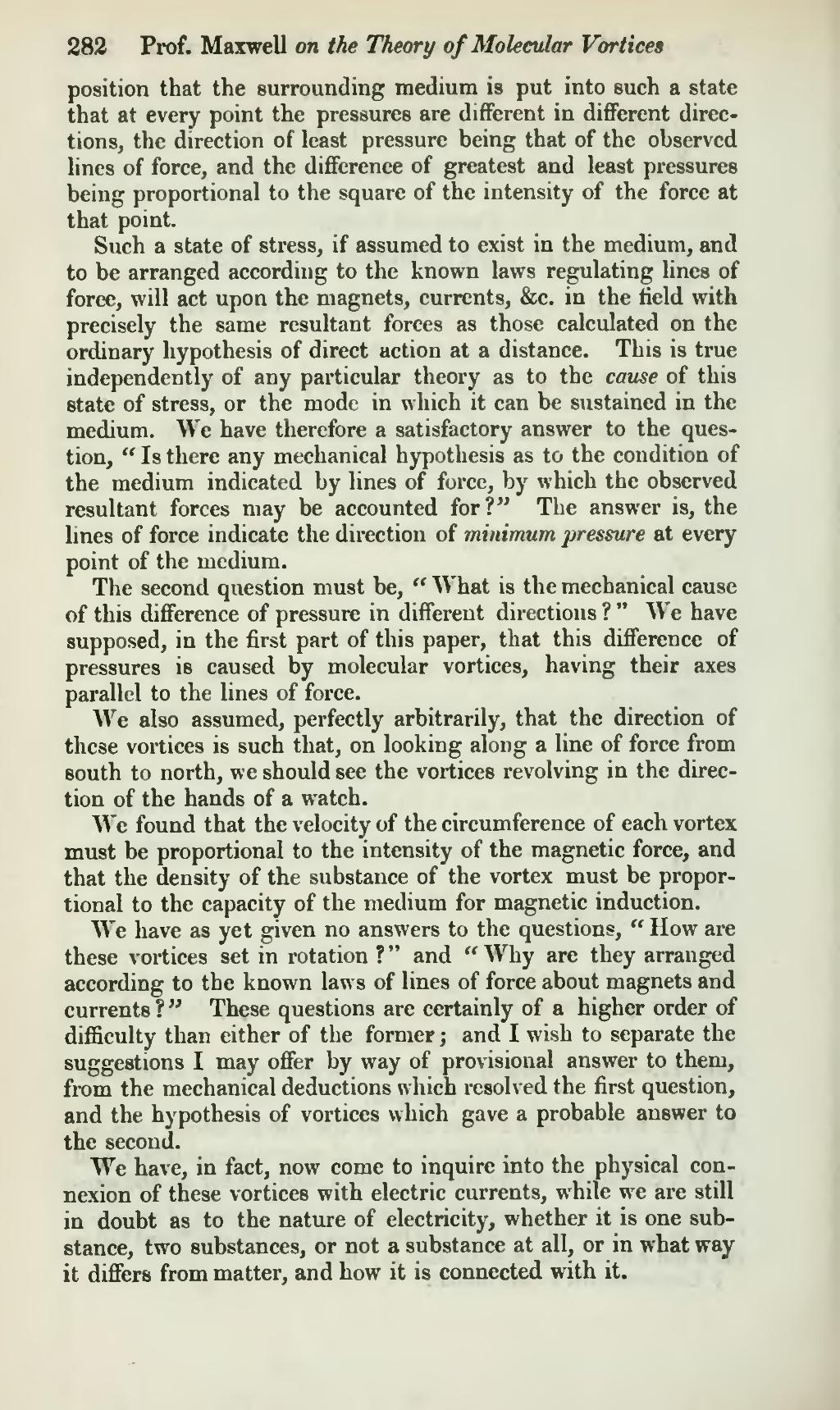position that the surrounding medium is put into such a state that at every point the pressures are different in different directions, the direction of least pressure being that of the observed lines of force, and the difference of greatest and least pressures being proportional to the square of the intensity of the force at that point.
Such a state of stress, if assumed to exist in the medium, and to be arranged according to the known laws regulating lines of force, will act upon the magnets, currents, &c. in the field with precisely the same resultant forces as those calculated on the ordinary hypothesis of direct action at a distance. This is true independently of any particular theory as to the cause of this state of stress, or the mode in which it can be sustained in the medium. We have therefore a satisfactory answer to the question, "Is there any mechanical hypothesis as to the condition of the medium indicated by lines of force, by which the observed resultant forces may be accounted for?" The answer is, the lines of force indicate the direction of minimum pressure at every point of the medium.
The second question must be, "What is the mechanical cause of this difference of pressure in different directions?" We have supposed, in the first part of this paper, that this difference of pressures is caused by molecular vortices, having their axes parallel to the lines of force.
We also assumed, perfectly arbitrarily, that the direction of these vortices is such that, on looking along a line of force from south to north, we should see the vortices revolving in the direction of the hands of a watch.
We found that the velocity of the circumference of each vortex must be proportional to the intensity of the magnetic force, and that the density of the substance of the vortex must be proportional to the capacity of the medium for magnetic induction.
We have as yet given no answers to the questions, "How are these vortices set in rotation?" and "Why are they arranged according to the known laws of lines of force about magnets and currents?" These questions are certainly of a higher order of difficulty than either of the former; and I wish to separate the suggestions I may offer by way of provisional answer to them, from the mechanical deductions which resolved the first question, and the hypothesis of vortices which gave a probable answer to the second.
We have, in fact, now come to inquire into the physical connexion of these vortices with electric currents, while we are still in doubt as to the nature of electricity, whether it is one substance, two substances, or not a substance at all, or in what way it differs from matter, and how it is connected with it.
